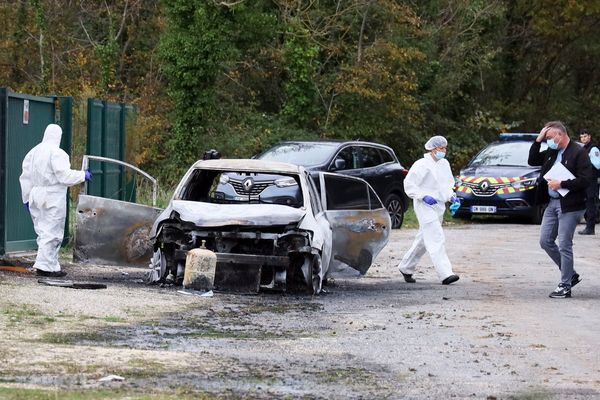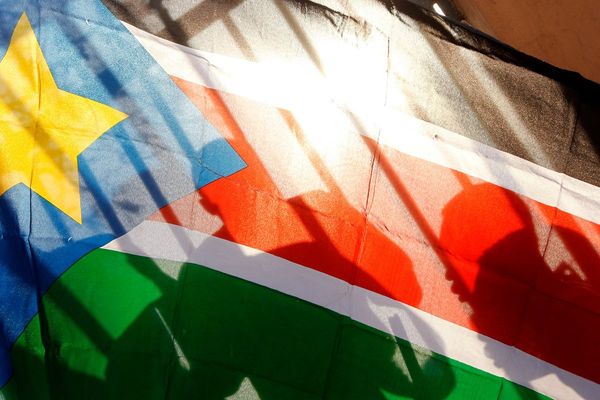
In a nondescript office building in Canberra, hundreds of officials have spent months fine-tuning highly secretive plans for Australia to become just the seventh country in the world to have nuclear-powered submarines.
The clocks on the walls show three times – Canberra, London and Washington – reflecting the fact Australia is depending on the United Kingdom and the United States to achieve what V Adm Jonathan Mead calls “a generational challenge” that will “redefine Australia’s strategic personality”.
Even towards the end of the planning process, eight or nine working groups have been holding regular virtual teleconferences at night with US and UK counterparts, said Mead.
“It is truly a trilateral pathway and trilateral partnership,” the head of the nuclear-powered submarine taskforce declares.
‘Not a binary choice’
Leaks out of the UK and the US this week have started to point to the outlines of a deal that will be officially announced in San Diego on Monday, US time.
The Guardian has reported the long-term Aukus plan would likely involve a British submarine design with heavy use of American technology – an outcome also reported by Bloomberg.
But that does not preclude a US interim solution to plug a potential capability gap caused by the retirement of Australia’s existing Collins class conventional submarines from the late 2030s.
Reuters cited four US officials as saying Australia was expected to buy up to five US Virginia class nuclear-powered submarines in the 2030s – although this would appear to clash with congressional concerns about Australia leapfrogging US needs on its own crowded production line.
The Australian government – determined not to leak the details of what it calls its “optimal pathway” to obtain at least eight nuclear-powered submarines – has refused to confirm any of the details ahead of the announcement.
But Mead, who leads a taskforce of more than 350 officials from its Canberra office site, appears keen to scotch the idea of outright winners and losers from a process that has been under way for the past year and a half. He maintains it is not a “binary” choice between US or UK options.
“I think the three leaders – when you see the announcement – will be very satisfied that we have been able to bring together something that is trilateral,” Mead said.
Making waves
When the Aukus security partnership was first unveiled in September 2021, it came as a bolt from the blue and triggered significant diplomatic reverberations – both with Australia’s friends and foes.
The abrupt scrapping of Australia’s $90bn plan for French designed conventional submarines sparked an immediate rift with Paris – and was the impetus for Emmanuel Macron’s infamous complaint that “I don’t think, I know” that the then-prime minister Scott Morrison lied to him (a claim Morrison always denied). Regional partners Indonesia and Malaysia also expressed fears Aukus could fuel an arms race.
China sought to discredit the deal, labelling it an “Anglo-Saxon clique” that would unsettle the region. In February 2022, weeks before the invasion of Ukraine, Russia joined with China in claiming the Aukus deal posed “serious risks of nuclear proliferation”.
Despite criticising the then Coalition government’s handling of the diplomacy surrounding Aukus, Labor has stood by the overall policy, and now that it is in government has overseen the final stages of the planning.
Mead has been at the centre of that planning. He agreed to an interview with the Guardian in the days leading up to the big announcement, in part to explain the motivations for the submarine plan, and to reassure regional partners about Australia’s commitment to nuclear safety.
He says the Indo-Pacific region has become more complex, more fragile and less stable over the past five years, and this has driven the change of approach. Mead made no criticism of Australia’s existing six Collins class submarines, describing these as the most advanced conventional submarines in the world and saying they play an important role in deterrence.
“But going forward, there was a realisation that we did need an advanced capability,” said Mead, who prior to his current appointment oversaw the sensitive review that led to the Coalition’s decision to scrap the French contract.
‘Apex predator’
“Nuclear-powered submarines enable you to remain undetected, you can patrol around the homeland, you can deploy further afield. They have great speed and stealth and firepower,” Mead said.
“Their primary role is to defend Australia, protect our people, safeguard our economic prosperity. I would say investing in this capability is future-proofing the way of life of Australia.”
Mead says the submarines aim “to deter anyone seeking to do harm to Australia” given that the country is heavily reliant on international trade and underwater telecommunications.
“Nuclear-powered submarines place really the single greatest question mark in an adversary’s mind,” Mead said. “If deterrence fails, they can respond with massive firepower.”
The Nine newspapers, in a deeply reported feature about the Aukus deal published in the lead-up to the 2022 election, said the “transformational power of nuclear-propelled subs is that they could allow Australia to pose a direct threat to the Chinese mainland”.
When this line was put to him, Mead did not directly comment on it. But he added that nuclear-powered submarines were “called the apex predator of the oceans”.
“They’re the most formidable defence capability one can procure,” Mead said.
Transparent oceans?
In addition to concerns about how long it might take for Australia to begin operating nuclear-powered submarines – the late 2030s or early 2040s have frequently been at the centre of speculation – other potential issues have been aired publicly.
The Australian National University’s National Security College report Transparent Oceans? found that scientific and technological advancements could make it increasingly difficult to hide the presence of submarines. The report suggested that oceans were “likely” or “very likely” to become transparent by the 2050s.
Mead said this issue had been taken into account.
“We have done a lot of work with our own science organisations, but with our partners as well in looking at what are the vulnerabilities of submarines.”
One option is that a submarine serves as a “mothership” from which other uncrewed underwater technology could be dispatched.
“I clearly see a role for uncrewed underwater vehicles operating in the 2050s, probably the 2040s, too,” Mead said.
“Those uncrewed underwater vehicles could be operated from the nuclear-powered submarine and could be dispatched at multiple chokepoints and working in conjunction with the nuclear-powered submarine.”
Safety concerns
Mead also wants to assure Australia’s friends across the region – and the population at home – that nuclear safety will be the “paramount” consideration as the three governments put the plan into practice.
“We’re going to leverage off the incredible safety record of our US and UK partners,” he said.
“They have managed over 500 nuclear reactors over the past 60 years, their submarines have travelled 240m kilometres without a nuclear reactor safety incident – that’s 300 times to the moon and back.
“We in Australia have hosted about 280 visits by nuclear-powered warships and submarines.”
Mead said the Aukus project depends on “establishing an ecosystem – that we can build a workforce that is aware, confident, and in some aspects, experts in nuclear technology”.
“It’s developing navy crews, it’s developing a management system that always has safety at the foremost of its considerations.”
Australia also needs to show it can be trusted to protect US military technology. The US has only once before shared its naval nuclear propulsion tech, with the UK in the late 1950s.
Mead confirms the recent designation of the Osborne shipyard in South Australia as a critical infrastructure asset – first revealed by Guardian Australia – is part of a broader effort to assure Australia’s Aukus partners that their secrets will be protected.
He says part of the Osborne shipyard will be a licensed nuclear facility. “It will have the crown jewels of US and UK technology. So we will really have to put in very high standards of security.”
Frenzy of activity
Mead said there had been a lot of site visits from US and UK officials to shipyards in South Australia and Western Australia, while Australian officials have also conducted site visits in the US and the UK.
“What we’re beginning to put together now is what is the best trilateral way that we deliver the submarine,” he said.
The leaders’ announcement next week won’t mark the end of Mead’s taskforce’s work. It will switch focus to actually delivering the project and ensuring the governance arrangements to make it a success.
“Whilst the announcement next week will not be a shock for us, our job now is to get on and to deliver this program,” Mead said.







